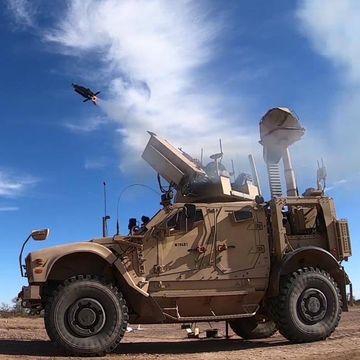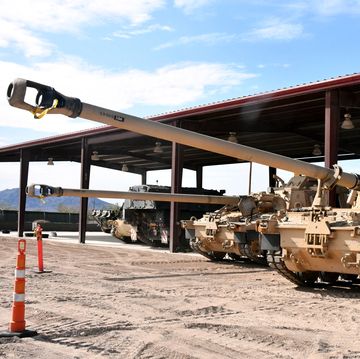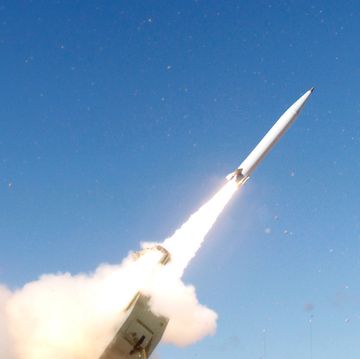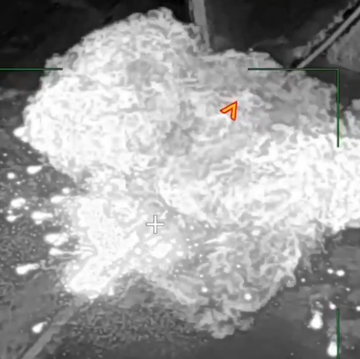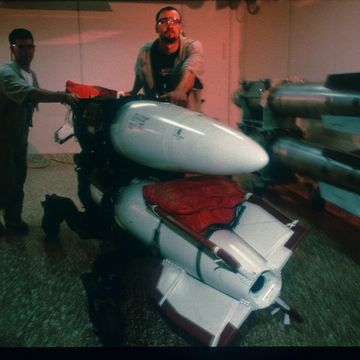When the Soviets were thinking about landwar in the late 1970s, they struck upon idea: How about strapping as many rockets as possible to a T-72 tank chassis, and using it on the battlefield? Thus, the TOS-1 Heavy Flamethrower System was conceived.
If you're confused by the "flamethrower" bit in that designation, it's understandable. The TOS-1 (and its more modern variant, the TOS-1A) look nothing like traditional flamethrowers, either handheld or tank-mounted, used in World War II and other conflicts. Instead, the TOS-1 is designated a flamethrower because, in addition to traditional incendiary rockets, it can also fire thermobaric rockets.
Thermobaric rockets are a "fuel-air" weapon system. When fired, the rockets disperse a cloud of flammable liquid into the air around the target, and then ignite it. The results are devastating—not only is the explosion significantly longer and the shockwave significantly hotter and stronger than a conventional warhead, but all the oxygen in the near vicinity is also consumed, creating a partial vacuum. This makes them horrifying weapons to use against infantry and entrenched personnel in bunkers and caves—exactly what the TOS-1 was designed for. Victims typically die either from the intense pressure of the initial blast, or suffocate as their lungs rupture in the vacuum afterwards. It's an incredibly unpleasant way to go.
It was first used in combat during the Soviet invasion of Afghanistan in 1988, but didn't make its public debut until more than a decade later, during the Second Chechen War in 1999. Lately, the Iraqi army has used it during its fight against ISIS.
The downsides of the TOS-1 are that it requires two support vehicles for carrying extra rockets and reloading, and that it has to get relatively close to its target before opening fire. But once the TOS-1A is in range, a full salvo of its 24 rockets will make a rectangle 200 meter by 400 meters—a bit more than 8 city blocks—hell on earth for anyone caught inside.
More destructive individual fuel-air bombs exist; the US military's GBU-43/B Massive Ordnance Air Blast bomb creates creates a shockwave so powerful it can kill people up to 1.7 miles away, and the Russians built a "Father of All Bombs" reportedly four times more powerful than that, which would make it the most powerful non-nuclear warhead in the world. But when it comes to land-based weapons systems, its hard to find something scarier that the TOS-1A.
Source: r/militarygfys








